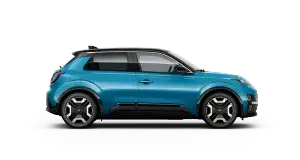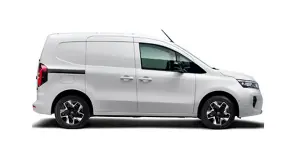Nissan X-Trail 2024 Owners Manual
7.24.5. Fuel Efficient Driving Tips
Follow these easy-to-use Fuel Efficient Driving Tips to help you achieve the most fuel economy from your vehicle.
Use smooth accelerator and brake pedal application.
Avoid rapid starts and stops.
Use smooth, gentle accelerator and brake application whenever possible.
Maintain constant speed while commuting and coast whenever possible.
Maintain constant speed.
Look ahead to try and anticipate and minimise stops.
Synchronizing your speed with traffic lights allows you to reduce your number of stops.
Maintaining a steady speed can minimise red light stops and improve fuel efficiency.
Use air conditioning (A/C) at higher vehicle speeds.
Below 64 km/h (40 MPH), it is more efficient to open windows to cool the vehicle due to reduced engine load.
Above 64 km/h (40 MPH), it is more efficient to use A/C to cool the vehicle due to increased aerodynamic drag.
Recirculating the cool air in the cabin when the A/C is on reduces cooling load.
Drive at economical speeds and distances.
Observing the speed limit and not exceeding 97 km/h (60 MPH) (where legally allowed) can improve fuel efficiency due to reduced aerodynamic drag.
Maintaining a safe following distance behind other vehicles reduces unnecessary braking.
Safely monitoring traffic to anticipate changes in speed permits reduced braking and smooth acceleration changes.
Select a gear range suitable to road conditions.
Use cruise control.
Using cruise control during highway driving helps maintain a steady speed.
Cruise control is particularly effective in providing fuel savings when driving on flat terrains.
Plan for the shortest route.
Utilise a map or navigation system (where fitted) to determine the best route to save time.
Avoid idling.
Shutting off your engine when safe for stops exceeding 30-60 seconds saves fuel and reduces emissions.
Buy an automated pass for toll roads.
Automated passes permit drivers to use special lanes to maintain cruising speed through the toll and avoid stopping and starting.
Winter warm u
Limit idling time to minimise impact to fuel economy.
Vehicles typically need no more than 30 seconds of idling at start-up to effectively circulate the engine oil before driving.
Your vehicle will reach its ideal operating temperature more quickly while driving versus idling.
Keeping your vehicle cool.
Park your vehicle in a covered parking area or in the shade whenever possible.
When entering a hot vehicle, opening the windows will help to reduce the inside temperature faster, resulting in reduced demand on your A/C system.










